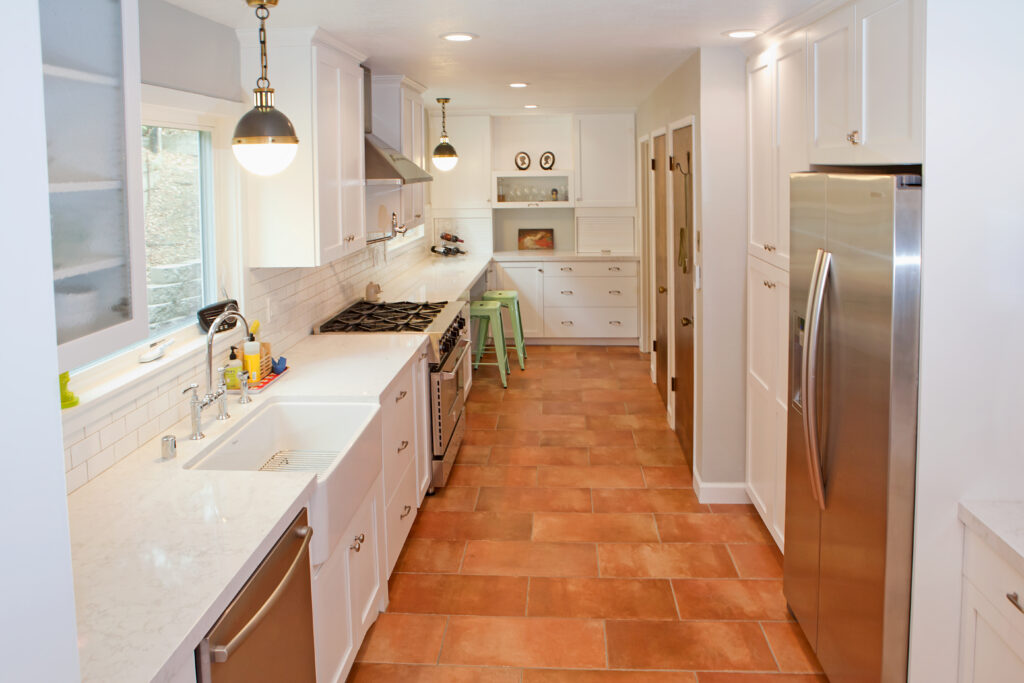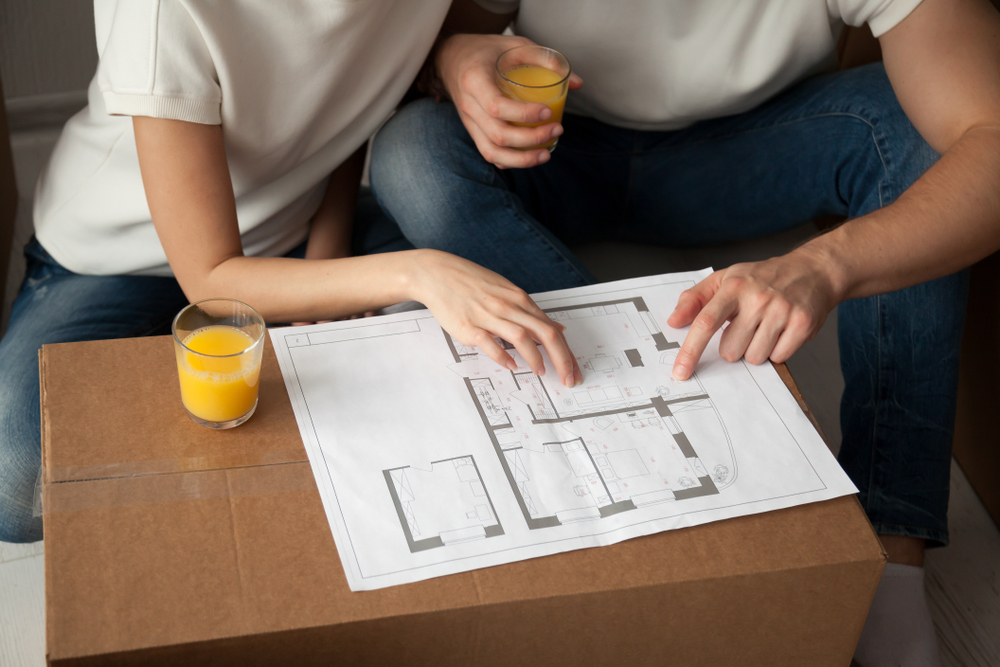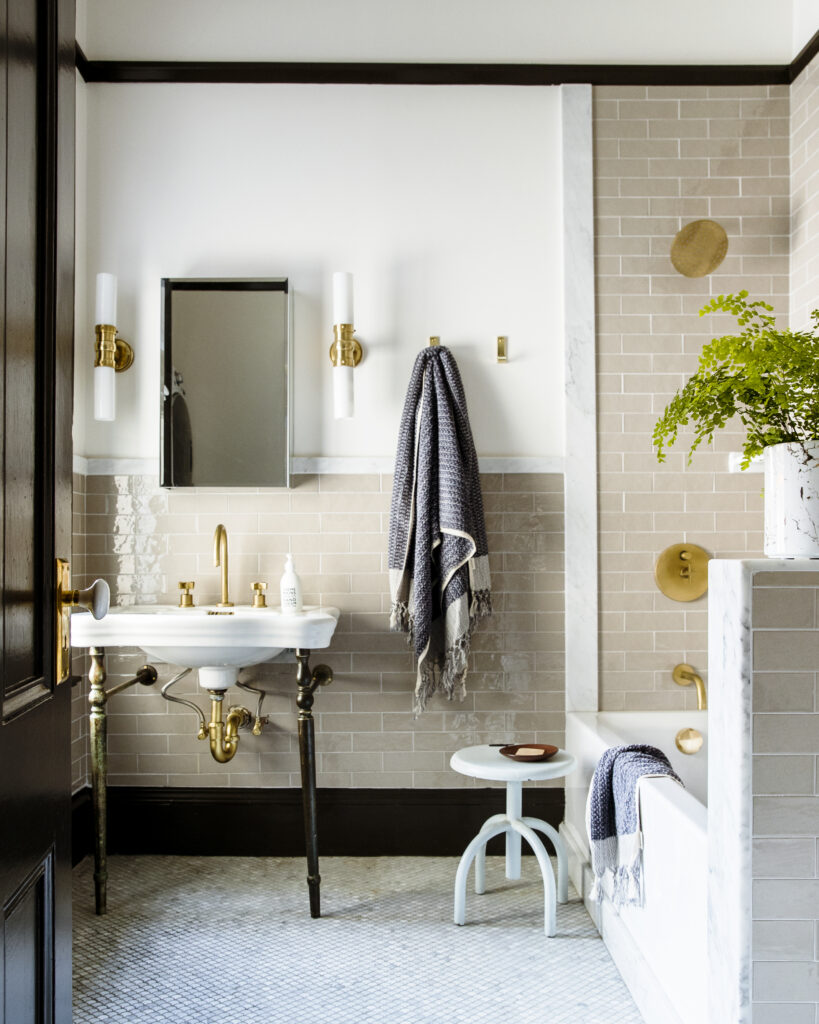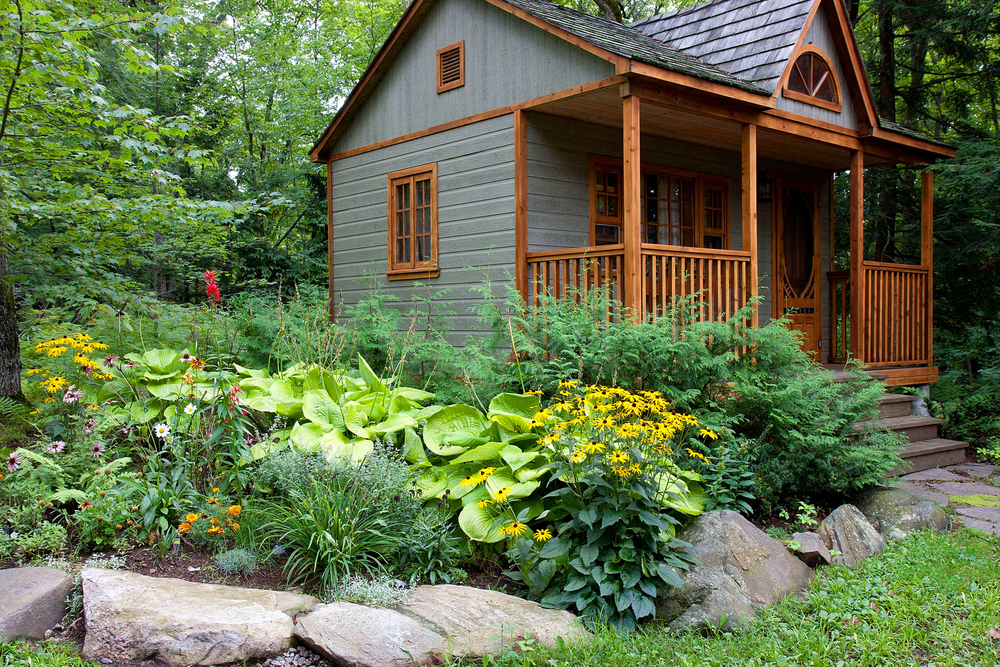Category Archives for Blogs

Important Reasons You Need a Permit for Your Remodeling Project
Sometimes homeowners are challenged by the complexity of codes and permits when planning a remodel. You may think these regulatory measures are nothing more than a needless government intrusion or a pointless cash grab. So you don’t get caught out, read on for a better understanding of permits and codes and what they mean to you.
Building Permits, Understood
Briefly defined, building permits are official written authorizations that a government (typically at the city or county level) issues to approve specific construction or remodeling projects. Following regulations and avoiding the wrath of government officials is an absolutely essential reason to secure a permit before beginning any significant construction or remodeling work. More than a legal requirement, permits ensure that all work is performed safely and in compliance with relevant construction, zoning, and building codes.
Building Codes, Understood
As defined by FEMA, building codes regulate the ”design, construction, alteration and maintenance of structures.” The permitting process centers around making sure that you do not break these codes in your construction or remodeling process. Setting minimum requirements to ensure the safety, health, and long-term welfare of all building occupants is their main purpose. Codes are essential to helping build your structure to protect people during earthquakes and extreme weather events.
The Benefits of Adhering to Permit and Code Regulations
Homeowners may resent the permitting process, but these regulations actually exist for your protection as well as the protection of others. They ensure that all projects result in structures and features that are safe to live in and use. Permits also add value to any property investment by serving as proof that all construction work was completed with industry best practices and in compliance with building codes. The inspection processes that are included in most permits can also keep contractors honest and guarantee that they deliver quality work.
The Dangers of Ignoring Permit and Code Regulations
Homeowners who skip the permitting process not only forfeit the various protections and benefits above but may face harsh repercussions from local authorities. If government officials need to force you to obtain a permit, they might double or triple the fees. Even worse, they might shut your project down or force you to tear down work that you have already completed. If your contractor completes a project without complying with the permitting process, you can only hope that they adhered to building codes for your safety and the safety of others.
In short, as the law resource NOLO puts it, “if your project requires a permit, get a permit.” And, furthermore, partner only with reputable contractors who take the time to get a permit themselves before beginning any construction or remodeling project.
Acquiring Professional Assistance
One of the key things to consider when choosing professional construction planning and design services is the ability (or lack of ability) of their architectural designers interact effectively with the local permit office. The codes for the region where a designer works should second nature and they should bring these to your attention early in the process so you have clear expectations.
Drafting Cafe Architects have extensive knowledge of the Bay Area’s building code requirements and can provide you with high quality plans and drawings that your contractor will be able to get approved. If there are design questions on plans they draw, they are happy to respond to your city or county’s permit office. For more information on permits and codes contact Drafting Cafe Architects today.

Functional Ways You Can Remodel Your Small Kitchen
Homeowners start the kitchen remodeling process for a wide variety of reasons. One of the most common reasons, however, has to do with size.
If your kitchen seems too small and cramped, you can consider removing a wall to expand into other areas of your home. You can also increase your kitchen’s square footage by adding on a breakfast nook or even an entire new room.
If these options are impossible or undesirable, there are still plenty of things that a skilled architect or interior designer can give you to provide extra breathing room in your kitchen. Here are just a few ways to make the absolute most of your limited kitchen square footage with a beautiful remodel.
Pare Down Cabinets and Shelving with Fixtures
When you bought that bread maker you thought you’d use it all the time, but it has sat unused at the back of your cabinet for the past decade. You can probably say the same for any number of kitchen appliances. And do you really need all that extra cookware and flatware? By reconfiguring your cabinets and shelving to reflect your actual storage needs, you can open up a tremendous amount of space in your kitchen. A kitchen that limits storage areas to absolute essentials also creates an incredibly pleasing minimalist aesthetic.
Get Creative with Storage Areas
An effective kitchen remodel will make the most of every nook and cranny that your kitchen has to offer. With the help of a good architect or interior designer, you can discover space that you didn’t even know that you had. Consider designs that add extra cabinets above a window and fill the space above your cooking range with shelves or cubbies.
Organize an Effective Galley Kitchen
A kitchen with a long and narrow layout that has storage space and counters on one or both sides of an open central area, known as a galley kitchen, is a great way to make efficient use of limited space. Although galley-style kitchens have developed a negative reputation for having a lack of ergonomic cooking prep space you can still create a kitchen that is not only exceptionally beautiful but highly functional.
Build Up Rather Than Out
When you have limited square footage to work with, installing cabinets to the ceiling is a great option for adding extra storage space while reducing overall clutter. Reaching the items that you store in those cabinets, however, can be a real problem. Rather than relying on a bulky stepladder that must be regularly accessed and requires storage space of its own, consider designing your kitchen remodel with a sleek rolling ladder feature. These rolling ladders not only make reaching items on high shelves a breeze, but they can make an interesting and stylish addition to your décor.
Get the Help of a Skilled Professional
If you own a home in the San Francisco Bay area and you want advice on how to make your kitchen more spacious, contact the experienced and knowledgeable professionals at Drafting Cafe Architects. No matter what your remodeling needs happen to be, you can receive a free estimate and advice from our team. We can help get your project off to a great start.

Best Interior Design Tips For Choosing Your Paint Colors
When your remodeling project includes new paint for your walls, it’s important to know how to choose the right tones. Whether you’re installing new cabinets and countertops in your kitchen or a new vanity or cabinets in your bathroom, you should aim for paint colors that enhance the room. The following tips can help you narrow down your options for new paint colors, but keep in mind that professional interior design services can help you select the best tones.
Complement or Contrast with Fixtures and Floors
When you’re choosing a paint color for the walls in your kitchen, you should consider the colors of your fixtures and floors. Otherwise, you could end up with wall colors that don’t pair well with the tones of your countertops, cabinets, floor, and other fixtures. You can choose paint colors that blend with the fixtures and floor for a more uniform design. Another option is to choose paint colors that contrast with the cabinets and other fixtures. However, make sure you don’t select paint colors that clash.
Consider the Room Size
An important element of interior design is choosing paint colors that improve the appearance of a room. Depending on the size of the room, this could mean choosing lighter paint tones to create a more spacious look and feel. For example, you can go with lighter wall and ceiling paint colors to make a bathroom seem larger. Darker paint tones typically make rooms look smaller, so it’s best to avoid choosing these for bathrooms or other smaller rooms in your home. You can choose darker paint colors if you want to make a larger room feel more cozy and inviting, such as a spacious living room.
Think About Lighting
As you compare paint color options for your home, consider the lighting in each room. Certain paint colors work better in different types of lighting. For example, you should avoid choosing a bold paint color for walls that receive a lot of natural light. Sunlight can make vivid tones appear overpowering, creating an unpleasant effect. Instead, choose neutral or lighter tones for these walls, and save brighter colors for areas that get indirect light.
Plan a Monochromatic Scheme
Monochromatic design schemes can work well when they’re done right. This schemes involve using variations of a single color to create visual appeal in a room. For example, you can choose various shades of blue for your bathroom walls, vanity, tiles, and cabinets. If you’re remodeling your kitchen, you can choose varying shades of grays or neutral tones for your walls, countertops, and cabinets. Keep in mind that you can also choose a paint color for your walls and trim that adds a visually striking look in an otherwise monochromatic room, such as white paint in a bathroom that’s mainly blue.
If you’re thinking of making some changes to your home in the San Francisco Bay area, visit Drafting Cafe Architects get information on interior design services. Our interior designers in Oakland CA can help you choose paint colors that enhance your home. You don’t need to be working on a remodeling project through our firm. Our interior designers can help even with your DIY project.

Smart Remodeling Projects That Add Value To Your Home
When you’re planning on making upgrades to your home, it’s important to consider the return on investment (ROI). Home remodeling ROI refers to the amount of money you might recoup from the cost of your project. ROI can vary widely based on location and other factors, such as the materials used or the amount of labor needed. Knowing rough estimates on ROI for different remodeling projects in Northern California can help you decide what changes to make to your home.
Kitchen Remodel
Kitchen remodeling projects can include minor changes, such as refinishing cabinets or installing new countertops. Major kitchen changes, such as reconfiguring the layout, expanding the size, opening up the flow, completely replacing cabinets, appliances, and other fixtures can create a more livable environment. Remodeling costs in the San Francisco Bay area can range from $24,500 to $54,800.
Bathroom Remodel or Addition
Bathroom remodeling projects can be minor upgrades, such as getting a new vanity or changing the lighting. Major upgrades, such as adding square footage or changing the layout may involve changing plumbing and electrical plans. To configure for your family, older bathrooms may need and upgrade to universal design or aging-in-place, such as replacing a bathtub with a walk-in shower for easier accessibility or installing grab bars. The return on investment for bathroom remodels and additions can range from $11,000 to $25,500 in the San Francisco Bay area.
Additions
Remodeling projects that involve increasing the square footage of a home may include adding a master suite, separate in-law suite, or other living area inside and out. Other addition options include adding a room to a basement or even adding another story to a home. Check with your local Realtor regarding below grade additions.
These costs vary widely depending on how complex the project is and other factors, such as how large the new space will be. Some areas do not count this living space into the total square footage when you sell.
| Project | Average Cost | Cost Recouped |
| Bathroom Remodel – midrange | $21,000 | 64% |
| Bathroom Remodel – Universal Design | $35,000 | 62% |
| Bathroom Remodel – upscale | $67,000 | 57% |
| Bathroom Addition – midrange | $50,000 | 54% |
| Bathroom Addition – upscale | $91,000 | 55% |
| Minor Kitchen Remodel – midrange | $23,000 | 78% |
| Major Kitchen Remodel – midrange | $68,000 | 59% |
| Major Kitchen Remodel – upscale | $136,000 | 54% |
| Master Suite Addition – midrange | $137,000 | 59% |
| Master Suite Addition – upscale | $282,000 | 52% |
If you need help choosing the right home remodeling projects for the best ROI, contact Drafting Cafe Architects to learn more about our services or get a free online instant estimate. Our experts can assist you with determining which changes to make to your home to boost its value and allow you to enjoy it more before you sell.

Great Ways to Convince Your Spouse to Remodel Your Home
You might know that remodeling your home offers some great benefits, but your spouse might not be on board. How can you get your significant other to agree on doing a kitchen remodel or another type of remodeling project? No matter how stubborn your spouse is, the following reasons might help them come around to appreciating the benefits of remodeling.
Talk About Home Value
You and your spouse might not be planning to put your home on the market right now, but what about the future? It’s never too early to work on boosting the value of your home. Making changes to it now means you will have a higher home value, which can help you get higher bids from interested homebuyers. Let your spouse know that doing a bathroom remodel or upgrading your kitchen are effective ways to raise the value of your home, since these are the areas that tend to get the most focus from buyers.
Discuss Return on Investment (ROI)
If your spouse’s main objection to remodeling is the cost involved, let them know that you can recoup all or most of these costs with the right projects. Certain remodeling projects come with a high return on investment (ROI), such as minor or major kitchen and bathroom remodels. This means when you put your home on the market, you’re likely to get a good portion of those remodeling costs right back thanks to a higher selling price. As an example, you can expect to recoup about 77 percent of the cost for a midrange minor kitchen remodel or roughly 64 percent of the cost for a midrange bathroom remodel.
Start Small
Your spouse might be reluctant to agree to a major remodeling project, but what about a smaller one? Smaller remodeling projects might involve making a few simple changes to a certain part of your home. While these might not seem like much, they can have a dramatic impact on the way a room looks and feels. If you have a spouse who doesn’t want to deal with a major remodel, consider going with a smaller one. For example, think about having new cupboards installed in your kitchen instead of having the entire layout changed. Your spouse might be more willing to agree to a minor remodeling project. If this goes smoothly, you might have an easier time convincing them to do a major project at some point.
Hire Experienced Professionals
Your spouse might not want to have remodeling done if they’re worried about being inconvenienced or having to deal with potential headaches. Let your spouse know that you can avoid remodeling drama by working with experienced professionals. At Drafting Cafe Architects, we offer a Design-to-Build approach that helps ensure a smooth remodeling experience that favors homeowners rather than builders. You and your spouse can count on us to stay in touch with you throughout your remodeling project and provide you with details about the work we’re doing. Whether you’re considering remodeling your kitchen or doing a home addition, we can help.
If you’re ready to get started on your kitchen remodel project or any other remodeling project, contact Drafting Cafe Architects for a free online instant estimate. Our architects can help you come up with the best design for enhancing your home.

Pros and Cons of Hiring a Design-Build Contractor
Design build contractors are sometimes touted as providing certain benefits for owners, such as the ability to work with one team for the entire project. However, it’s important to understand the drawbacks of going with this approach as an owner. This process could end up costing more than you expected for different reasons. Keep the following in mind when you’re looking into options for your remodeling projects.
Disadvantages of Design Build Firms
Design build firms typically take a top-down approach that puts homeowners last. When you work with one of these firms, you will usually receive a soft bid on your project from the builder. A soft bid is a general bid without all the details included. Design build firms in the Bay Area might present this as a cost-effective and efficient way to have your new house built, but it usually ends up being much more of a benefit for the builder. They use this soft bid to get you in the door knowing that if they can be the low bid at this point, you probably won’t want to switch halfway into the process when all the hard costs are added.
One of the biggest drawbacks of working with a design build firm is a lower chance of being able to submit a competitive bid. This lack of competitive bidding can result in higher costs overall. You will also face limited options in terms of designs, which means you could be paying more for a remodel that represents what is preferred by the architect and the builder instead of what you want. Keep in mind that builders in design build firms usually subcontract work out to other professionals, such as architects, interior designers and engineers. You may think a design build firm employs all these people, but the often do not. They aren’t getting together to discuss your job. It’s a series of handoffs — exactly what you probably didn’t want.
During the design build process, builders and architects might not discuss your budget until a later point in the project. This puts you at risk of finding out that your project is actually going over your budget. By the time you find this out, you are too far along in the process to back out. You’ll then have to face a challenging decision to make changes to your project as needed in order to stay within your budget or accept the higher cost.
Design-to-Build Firm – the Better Way
If you want to minimize the risk of paying more for a home remodel that you’re not entirely satisfied with, consider a Design-to-Build approach instead. This type of approach puts you first as the homeowner and ensures that you will be kept in the loop throughout the project. When using a design-to-build solution, you will be working with architects, interior designers, builders and other professionals to create the project that meets your needs while also staying within your budget.
A Design-to-Build approach combines the advantages of the traditional building process with the design build process. Using this kind of approach gives you the advantage of being able to work with architectural designers to create the remodeling plan you want while receiving timely input from builders on estimated construction costs. This allows you to make adjustments as needed to stay in your budget. Having an architectural designer, interior designer and builder collaborating on your project helps keep costs down overall and provides a more streamlined approach.
If you’re looking for more information on design build firms Bay Area, please contact Drafting Cafe Architects. Visit us for a free online instant estimate and to learn more about our architectural design services. We offer a Design-to-Build approach to help you create the home you’ve always wanted.

4 Bathroom Remodel Ideas for Enhanced Comfort and Convenience
Spending recent months sheltering in place has given many homeowners time to realize that their home could use an upgrade. With bathrooms being a major part of your home’s value and playing a big role in your day-to-day life, it’s important to make these areas as functional as possible while also improving their appearance and comfort. Architectural design services can help you make the most of your bathroom remodel. If you’re not sure about which changes to make, consider the following ideas.
Shower Window or Skylight
Natural lighting can have a big impact on the way your bathroom looks. Adding a window in your shower stall or a skylight above it allows plenty of outdoor lighting in, giving your bathroom a warmer and more inviting feel. Keep in mind that natural lighting can also make a smaller bathroom look more spacious. Architectural designers can help you choose the right style of window or skylight to add to your bathroom. In addition to boosting the amount of light your bathroom gets, this upgrade can also help raise your home’s value.
Upgraded Lighting
If you prefer adding more light without putting in a window or skylight, consider making upgrades to your lighting for your bathroom remodel. Recessed lights around your bathroom mirror, for example, provide extra illumination when you’re getting ready for the day. You might also consider adding overhead dimmer lights, so that you can adjust the amount of lighting needed at different times, such as lower lighting if you’re using the bathroom during the night or brighter lighting when showering. With help from interior design professionals, you can choose lighting that adds visual appeal and better illumination.
Tankless, Low-Flow Toilet
If your bathroom remodel includes upgrading your toilet, this is a great time to focus on making sustainable changes. A low-flow toilet uses significantly less water with each flush than standard toilets, making it a more eco-friendly choice. A tankless toilet offers a way to save space and improve the appearance of your bathroom. With this type of toilet, you won’t have a large, unsightly tank taking up space. instead, the tank is installed inside the wall right behind your toilet. Tankless, low-flow toilets should be part of your interior design package when remodeling your bathroom if you’re planning on replacing plumbing fixtures.
Wall Storage
Adding storage space to your bathroom can give you a convenient area for keeping washcloths, bath towels, hand towels, and other items. Depending on how much space you have, you can add open shelving or a wall cabinet. Open shelves make it easy to reach items you need while also giving you space to add touches of decor, such as houseplants. If you want to use less wall space for storage, consider having a recessed medicine cabinet added as part of your bathroom remodel. Architectural design services can assist you with determining the ideal wall storage for your bathroom.
If you’re planning a bathroom remodel for your home in the San Francisco Bay area, please visit Drafting Cafe Architects online for a free online instant estimate . Our design team can help you choose an interior design package that enhances your home’s appearance while also improving its functionality.

Planning Guide: Build an Income Generating ADU
Have you ever wondered if you could use unused space better or more profitably? Turning that large shed or cluttered garage into a lovely backyard home could become a guest house, in-law flat, or pool house rental.
With so much uncertainty in today’s economy, having an additional stream of income could help provide peace of mind. Renters could be either long or short-term, depending on where you live. One of the nice features of an Accessory Dwelling Unit (ADU) is the many different configurations and plans you can choose from. Imagine being able to lease a comfortable open floor concept with one or more bedrooms and a kitchen with full-size appliances. If it’s a short-term rental, you could configure it as a flexible backyard home office, guest house, and occasional rental!
How To Plan Your ADU
If you are adding a new structure, there will be some infrastructure costs associated with building an ADU on your property. You need to consider the costs of adding plumbing and electricity. Even if you are repurposing an existing space, you may need to upgrade infrastructure. The purpose your ADU will serve is the most important goal during the research and planning stages. For example, learning what similar units rent for in your area vs. the cost of construction will be important. Here are some other considerations:
- Property taxes
Adding an ADU to your property has the potential to raise your property taxes
- Rental operating expenses
As the landlord, you will be responsible for ensuring everything is maintained. If this will be a long-term rental utility billing need to be researched. Will use be billed to your main residence or does the city, utility provider allow the ADU to have a separate billing account? You also need to insure your property and possibly umbrella coverage for unforeseen accidents.
- Taxes on rental income
You will have to pay taxes on any rental income earned, but there are also tax benefits that can be deducted due to the operating expenses. If you plan to use a service like Airbnb or Apartments.com, there will be fees.
- Restrictions from the city
Depending on where you live, the city may restrict how much you can charge for rent, whether short-term rentals are allowed, and the process for dealing with problem tenants. Take time to learn what your rights are as the property owner and as a landlord.
Although it seems like a lot to digest, there is a changing landscape in cities that can’t be denied. Many cities have started relaxing their rules on second dwellings and even adding programs that help homeowners who rent to low-income tenants. As the pandemic continues reshaping how people live and work in this economy, having options is something to take full advantage of.
The team at Drafting Cafe Architects can provide plans that work for your location and desired ADU. We have years of experience in the Bay Area and can help. We offer packaged plans with interior design included and can add more customization if you choose.
Are you ready to take the next step and build an ADU for rental income? Contact the team at Drafting Cafe Architects to schedule a consultation today!

Do You Need an Architect or an Interior Designer for Your Kitchen Remodel?
There are a few different kinds of professionals that you can work with when you’re remodeling your kitchen. Contractors, usually either general contractors or renovation specialists, are necessary for the build process. But what about your new design? Architects and designers can help with this—though sometimes it isn’t always clear which type of professional you should choose.
Which is Right For Your Remodel?
Let’s start by understanding the differences between architects and designers. Designers are typically hired for aesthetic upgrades. They can help with color and material selection, and they have the knowledge to pull an interior design together. Some designers are also able to help your architect with larger remodels that may involve moving walls or adding square footage. However, interior designers typically operate in a somewhat different area with experience in the aesthetic aspects of design rather than the structural and architectural elements.
An architecture firm, on the other hand, is capable of a lot more in terms of structural changes. For example, if you want to enlarge your kitchen by moving walls—even exterior walls—an architect can draft structurally sound plans to help you do this. Architects also have experience with local building codes where a designer does not.
This means that if you plan to rearrange key fixtures, like your lighting system, the location of your stove, or plumbing, an architect will be your best bet to make sure everything flows and is up to code.
Another key part of an architect’s training is design theory. With knowledge in design theory, architects are capable of putting together a kitchen design that not only suits the floor plan you have in mind, but also has an efficient traffic design that makes navigating your kitchen easier.
Should You Choose an Architect or Designer?
The choice comes down to the scope of your kitchen remodel. If your renovation will be a big one including structural changes or moving key elements like plumbing and electrical, then look for an architecture firm that has the expertise you need to make these changes. An architect can also help you with things like securing permits and helping recommend a builder to complete the work, which is an added advantage.
If, however, you simply want to update your kitchen aesthetically, then a designer may be the better option. These professionals are typically well versed in colors, materials, textures and know what works well together. Plus, they may even be able to help you source the materials, which can save you time and money.
What if I Want Both?
Your kitchen remodel may need both an architect and a designer. This is the best of both worlds, giving you access to expertise in structural design as well as a professional with an eye for style. Drafting Cafe Architects has professionals in both areas, as well as architectural and interior design packages to help you make the most of your renovation.
We even offer our Design-to-Build package that provides both an architect and a designer, plus recommendations for established local contractors, plus a personal project manager that visits the jobsite regularly and keeps you informed.
Ready to get an estimate for your kitchen remodel? Drafting Cafe Architects offers a free online instant estimate tool! Just answer a few questions about your project—which you can do in less than a minute—and we’ll send you budget information free of cost.

Practical Home Office and Home Schooling Solutions
There is little question that the coming academic school year and work environment are going to continue to look different this fall. With more and more school districts committing to virtual learning plans and most businesses asking their employees to continue to work from home to mitigate the spread of the coronavirus, we’re all likely to be confined to our homes until a widespread treatment or vaccine is available. There is a good chance that you’ve come to know your home a little too well over the past several months, especially when it comes to what it’s lacking in terms of a quiet workspace or work area. The good news is that there are a variety of practical solutions you can enact now – both large and small – to make things more manageable in the foreseeable future for yourself and your children as we navigate the new normal. Here’s a look:
Quick Fixes
Don’t have a dedicated home office or study area? Don’t fret, there are a few things that you can do to create a makeshift area for either purpose. Here are some ideas, and we can help with further interior design:
- Put a desk in your master bedroom: This is an area that likely receives little activity during the day, which would make for a good environment to focus in without disrupting the rest of your household.
- Turn your dining room into a makeshift school space: Put your dining room finery in storage for the near-term and turn this room into a temporary school area. Have a desk for each of your children to work at for individual assignments and place a monitor or laptop at the front of the “classroom” to stream the teacher’s lessons.
- Create the ideal environment: Make sure where your kids are learning, or you are working is receiving a good amount of natural daylight. Daylight is proven to boost productivity and elevate mood, something we all need – especially now.
ADU
If you’re looking for more of a permanent fix, an ADU, or accessory dwelling unit, can make for a great addition to your property. These units are most popular as in-law suites, pool houses or guest accommodations, but they can make for ideal home offices or classrooms as well. What’s nice about ADUs is that they’re versatile. So, while they may be housing virtual learning or serving as a temporary office for now, when the pandemic ends they can easily be converted into a guest room or apartment that you can rent out to supplement your income. Contact us today to learn more about ADU house plans and services.
Below-Grade Expansions
If you can’t build out, why not build under? A basement, or below-grade expansion, is one way to add space to your existing home when there’s limited room in your yard and you’re unable to add another story to the home. These areas can then be easily converted into a study or home office.
Contact Us Today
For more information on the little and big things that you can do to add functionality to your property and better accommodate at-home learning and work, contact us today to learn about our architectural design services.
